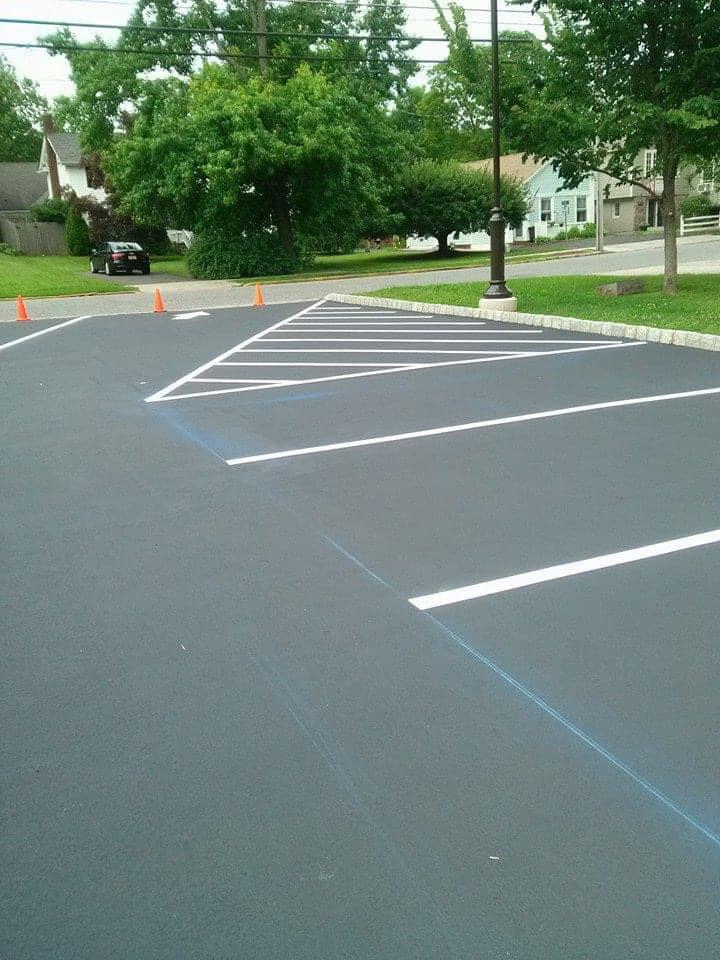Parking Lot Striping: Everything You Should Know
Parking lot striping is more than just painting lines—it’s a vital part of maintaining a safe, organized, and efficient parking area. Whether you own a commercial property, manage a residential complex, or oversee an industrial site in Ontario, understanding the ins and outs of striping can make a big difference. In this guide, we’ll cover everything you need to know about parking lot striping, with insights from Capital Parking Lot Line Painting.
What is Parking Lot Striping?
Parking lot striping, also known as line painting or pavement marking, is the process of applying durable paint to asphalt or concrete surfaces to create visible lines, symbols, and zones. These markings designate parking spaces, traffic lanes, pedestrian paths, and more, ensuring clarity and order in any lot.

Why Striping Matters
Striping isn’t just cosmetic—it serves critical purposes:
- Safety: Clear lines reduce accidents by guiding drivers and pedestrians.
- Efficiency: Well-defined spaces maximize parking capacity.
- Compliance: Markings meet accessibility and safety regulations.
- Appearance: Fresh lines enhance your property’s look.
The Striping Process
Striping is a multi-step process that requires precision:
- Planning: Layouts are chalked out to ensure accuracy.
- Preparation: Surfaces are cleaned to remove dirt and oil.
- Application: Paint is applied with stencils and professional tools.
- Drying: The paint cures for a lasting finish.
Capital Parking Lot Line Painting follows this process to deliver top results in Ontario.

This close-up shows the crisp, clean lines of a well-striped lot.
Types of Paint Used
The paint choice affects durability. Water-based paints are eco-friendly and quick-drying, while oil-based paints offer toughness for high-traffic areas. In Ontario’s climate, Capital Parking Lot Line Painting selects paints that withstand snow, salt, and UV rays.
Colour Options
Colours play a key role in striping:
- White: Standard for parking spaces and lanes.
- Yellow: Marks no-parking or special zones.
- Blue: Designates accessibility spaces.
- Red: Highlights fire lanes or emergency areas.
Common Striping Applications
Striping covers more than just parking lines:
- Traffic arrows for directional flow.
- Crosswalks and pedestrian zones.
- Loading and no-parking areas.
- Handicap symbols for compliance.
Ontario’s Weather Challenges
Ontario’s harsh winters and hot summers test striping durability. Snowplows, road salt, and UV exposure can fade lines quickly. High-quality, reflective paint and regular maintenance are key to keeping markings visible year-round.
How Often Should You Restripe?
Striping frequency depends on traffic and weather. In busy lots, lines may need refreshing every one to two years. Spring or fall are ideal times in Ontario, avoiding extreme conditions. Capital Parking Lot Line Painting offers schedules to minimize disruptions.
Benefits of Professional Striping
Hiring experts like Capital Parking Lot Line Painting ensures:
- Precision: Straight, consistent lines.
- Durability: Long-lasting results with quality materials.
- Compliance: Adherence to Ontario’s accessibility laws.
DIY vs. Professional Striping
DIY striping might seem tempting, but it often lacks the tools, paint quality, and expertise of professionals. Improper prep or application can lead to quick fading or uneven lines. Professionals save time and ensure a polished outcome.
Get Started with Capital Parking Lot Line Painting
Parking lot striping is essential for safety, efficiency, and curb appeal in Ontario. With Capital Parking Lot Line Painting, you get expert service tailored to your property’s needs. Contact them today to learn how they can transform your lot with professional striping.



